Sarmale are Romania's national dish: amazingly comforting, stuffed cabbage rolls with ground pork and rice, slowly cooked for hours.
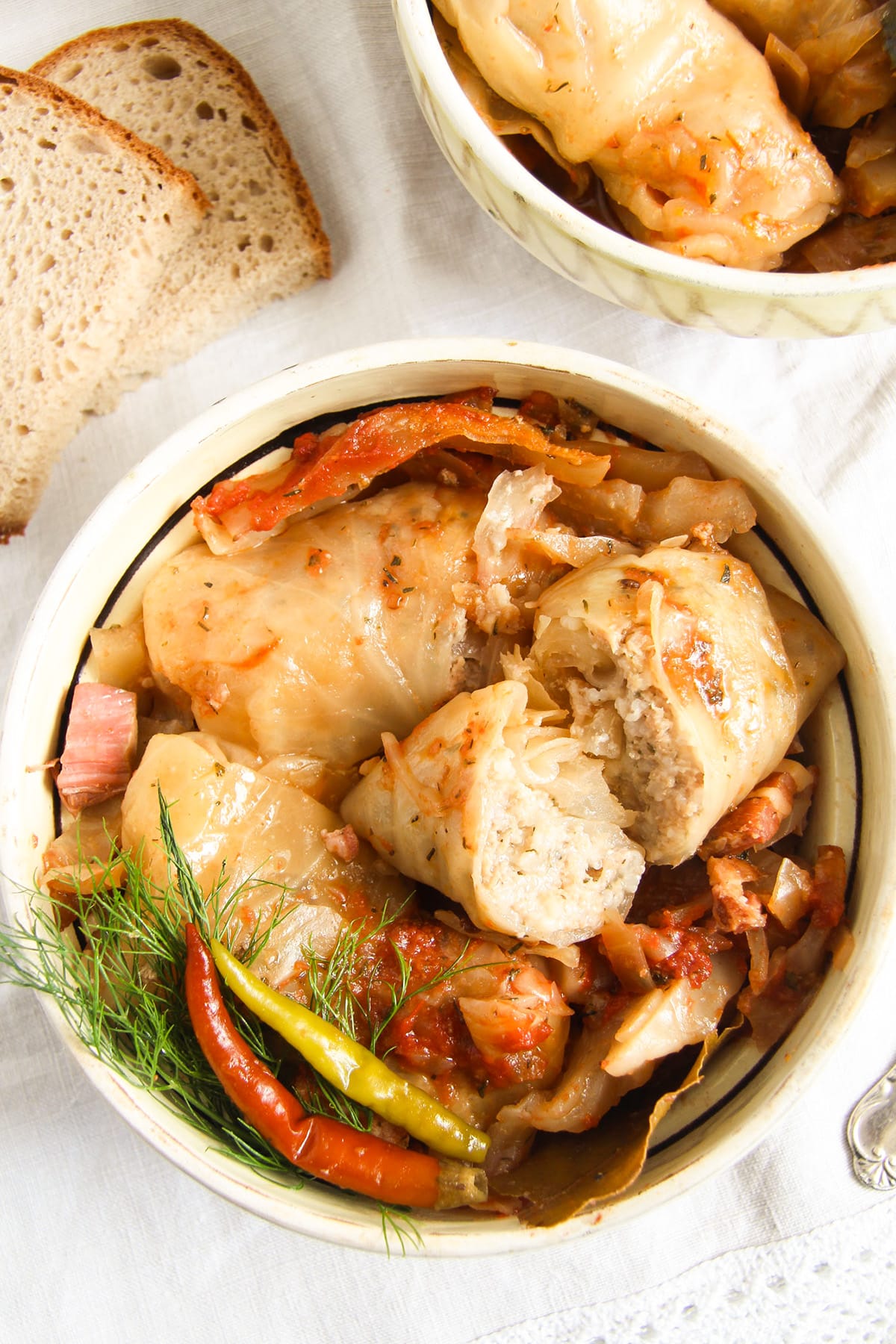
Sarmale is my favorite food ever! I like food, and I have lots and lots of favorite dishes with at least a new one coming every month or so, but these Sarmale recipe or Romanian cabbage rolls are IT!
I grew up with sarmale, we had them often, not only for Christmas or Easter, and I am perfectly convinced that my grandmother used to make the best cabbage rolls ever. 🙂 This is her sarmale recipe.
I know many Romanians reading this will think, “These sarmale aren’t like the ones my mother or grandmother makes.” But that’s how it is with traditional recipes. They’ve been passed down for generations, and everyone makes them a bit differently. Each family, each region, even each person, adds their own touch. There’s no single true recipe for sarmale - there are thousands. These are the ones from my family. My aunt makes them in a similar way, and hers are just as good, but still not exactly the same.
Try these Vegan Cabbage Rolls with Sauerkraut, too.
Jump to recipe
Recipe ingredients
Cabbage or sauerkraut
Sarmale can be made with either fresh white cabbage or sauerkraut. Traditionally, sauerkraut is the first choice, but I’ve always liked the fresh version - “sweet” sarmale - a bit more.
If you want to use sauerkraut, look for whole fermented cabbage heads at Russian, Polish, or Turkish stores. Soak the leaves for 2 to 4 hours if they’re too sour or salty. Sauerkraut leaves are soft and easy to roll, which makes the job easier. Try these Sour Cabbage Rolls, too.
If you can’t find sauerkraut, no problem - fresh white cabbage works just fine. It takes a little more time to prepare, but with some patience and a good knife, it’s easy enough.
Meat
My grandmother and aunt always said that the fatter the meat, the better the sarmale. They’re right. I only make sarmale two or three times a year, so I’ve made peace with the fat content.
When buying pork belly, ask the butcher for the fattier pieces and have them ground for you. I also buy a few smoked spare ribs and a large piece of smoked bacon.
You can also make sarmale with regular ground pork, just make sure it is not lean meat.
Spices
Lots of summer savory -cimbru -is a must when making sarmale, but if you can’t find it, you can replace it with thyme or, even better, Greek oregano, if you can find that – it’s quite similar. I never measure the salt or savory, I just add plenty- less salt if I’m using sauerkraut - and taste until it feels right.
You will also need dill seeds, bay leaves, and black peppercorns - you’ll need a good amount of both.
How to make Sarmale?
Making sarmale isn’t hard, but it does take time. Rolling each cabbage leaf takes patience and a bit of practice - you might find the first few tricky, but it gets easier fast.
How to prepare fresh cabbage for filling?
- Bring a very large pot of water to a boil, a pot large enough to hold the cabbage head and still leave you some space to handle the cabbage.
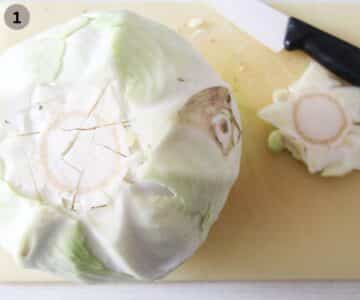
Step #1: First, cut away the protruding part of the core. Then make incisions with a small sharp knife around the core, about 4-6 incisions around the core.
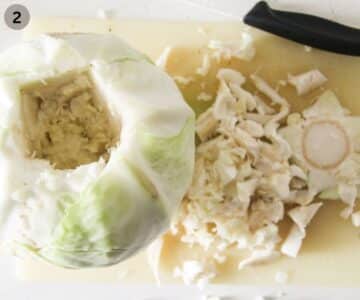
Step #2: Loosen the core by cutting through it in a crisscross pattern, almost like making several X shapes. Once it starts to give, remove it piece by piece, trimming as needed to make it easier to pull out.
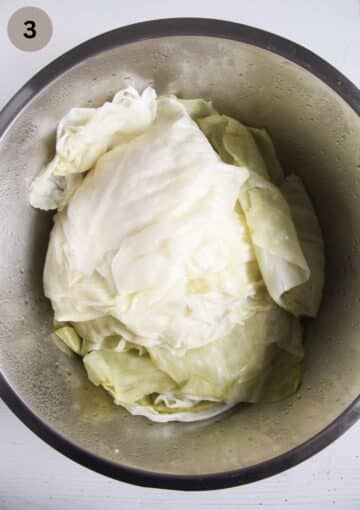
Step #3: When the water boils, add salt and vinegar. Gently lower the cabbage into the pot, hole-side down. Let it cook, then turn it over and start loosening the leaves using two forks. You’ll only manage to remove one or two layers at a time. Keep turning the cabbage now and then. As you pull off the leaves, place them in a large colander to drain and cool.
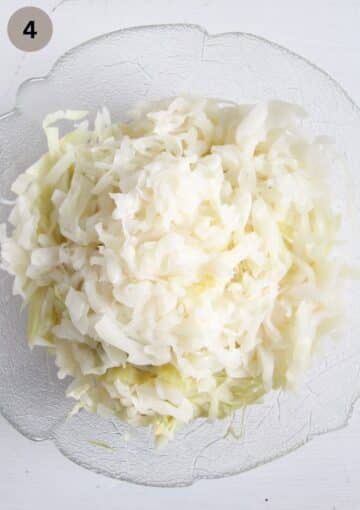
Step #4: Chop the inner leaves, those that are too small to roll; you will need them, too. Once you prepare the leaves for stuffing, you will have more leftover pieces, which you can chop.
Caution: When handling the cabbage in the pot, be careful not to burn your hands with the hot water.
How to fill them?
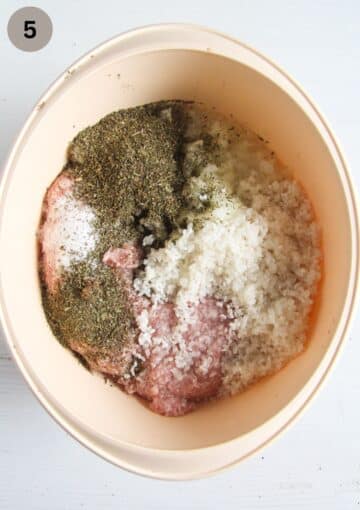
Step #5: Place the soaked rice and its water, grated onions, meat, herbs, and salt.
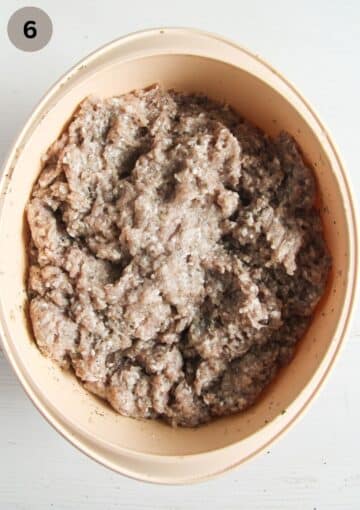
Step #6: Add cold water to the filling little by little until it’s really soft, about ½ to ¾ cup. Mix well with your hands until the mixture is soft and slurpy.
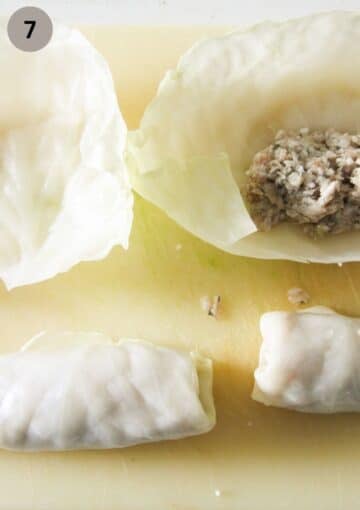
Step #7: Place some filling at the base of the prepared cabbage leaf, fold the bottom over the filling, then fold the right side of the leaf over the meat and roll tightly. Tuck the left side of the leaf inside the roll using your finger.
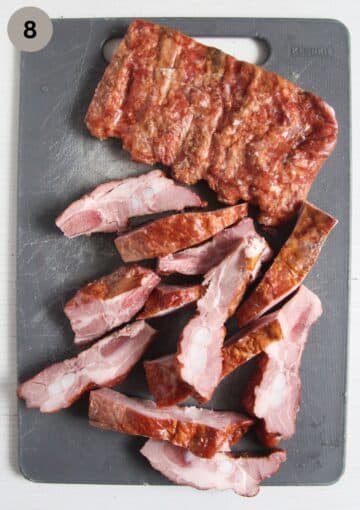
Step #8: Cut the smoked ribs into individual pieces and chop the smoked bacon into smaller pieces.
Tips: Cut the larger leaves in half down the middle, discarding the stems. Leave medium and smaller leaves whole, but trim the thick part of the stem. Use a sharp knife to thin the stem by running the blade along the thicker side.
If some of the leaves break, don't throw them away; you will either be able to build some rolls with the help of two broken leaves or chop them finely and use them as a base and topping for the sarmale pot. Chop all the leftover cabbage into small strips.
Assemble the pot
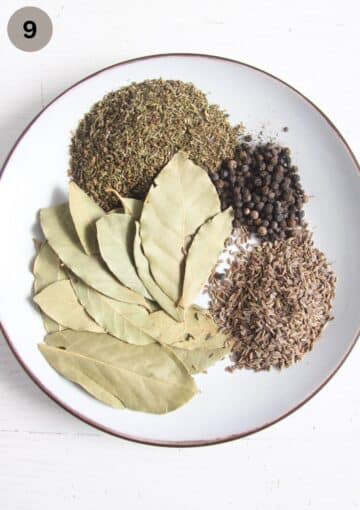
Step #9: Arrange all the spices on a plate beforehand, so you don't have to handle them with dirty hands while making sarmale.
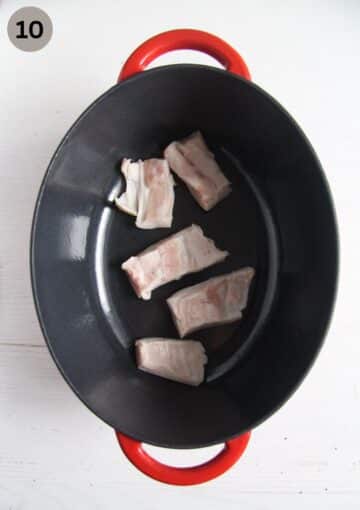
Step #10: Place bacon or pork belly rind at the bottom of the pan, if available. Otherwise, use bacon strips.
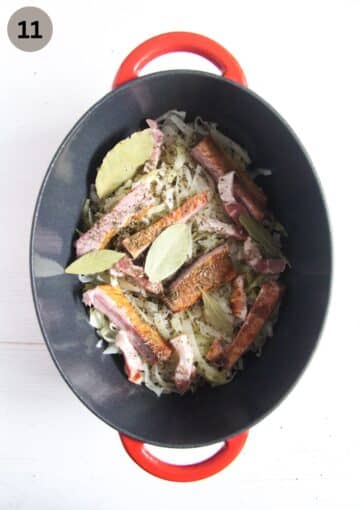
Step #11: Layer half of the chopped cabbage in the pan. Add some bay leaves, peppercorns, a generous sprinkle of dill seeds, and even more savory. Top with a third of the smoked ribs and a third of the bacon.
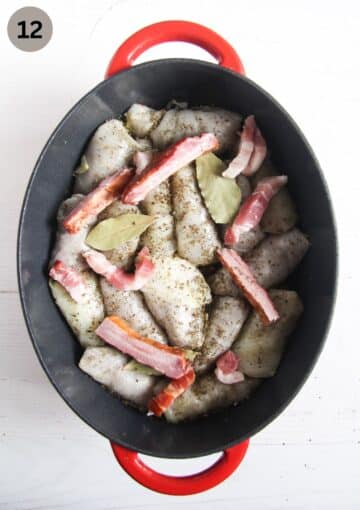
Step #12: Arrange a layer of sarmale over the cabbage, then top with bay leaves, peppercorns, dill seeds, savory, bacon cubes, and ribs. Sprinkle with a bit of salt if using fresh cabbage; skip it if using sauerkraut.
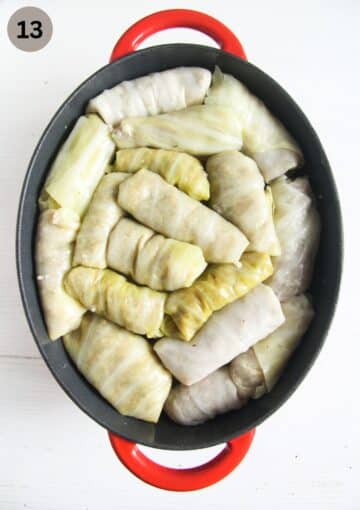
Step #13: Arrange the second layer of sarmale and top with bay leaves, peppercorns, dill seeds, savory, bacon, and ribs. My pot fits two layers, but if yours fits more, keep layering the same way - just make sure you have at least two layers.
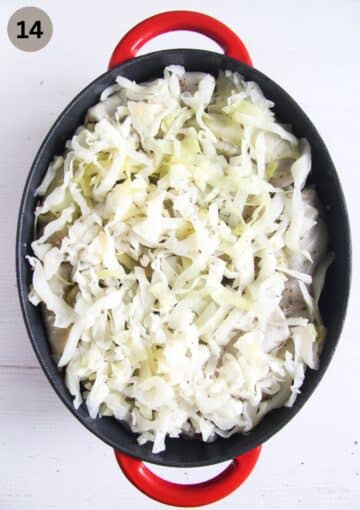
Step #14: Finish by covering everything with the remaining chopped cabbage.
Tip: Using a large Dutch oven would be great, but I have used other regular large pots as well. The pot should be large enough to hold two layers of cabbage rolls and still have some space at the top so that the water in the pot will not overcook and make a mess on your stovetop.
Cook the rolls
Bring a kettle of water to a boil and carefully pour over the sarmale. There should be enough water to hold the rolls, but not cover them completely. Cover the pot and bring everything to a boil, then lower the heat to a minimum.
Simmer, covered, leaving a thin crack open for about 2 ½ hours or until soft.
Mix the pureed tomatoes with some boiling water, enough to make the puree runnier. Pour the mixture on top of the sarmale and let it sip through them a bit. Alternatively, you can thinly slice a few ripe tomatoes and place the slices on top. In this case, add a bit more boiling water as well, but not too much.
Continue cooking the sarmale for about one hour more in the oven, but this time uncovered.
Store and freeze
The Romanian stuffed cabbage tastes best when reheated, so I always make the rolls one day before. As I always make two huge pots, we always eat them 3 or 4 days in a row, and we always say they taste even better after each reheating. Just make sure that you keep them refrigerated.
Freeze them in airtight containers for up to 3 months. Defrost them in the fridge.
Serve sarmale
You can serve them with basic polenta or white bread. Most of the time, we eat them with polenta on the first day and then with white bread on the following days.
Smetana or crème fraiche (or even Greek yogurt) is a must. Also, buy some pickled hot peppers, preferably in an Eastern European or Turkish shop, and serve them on the side.
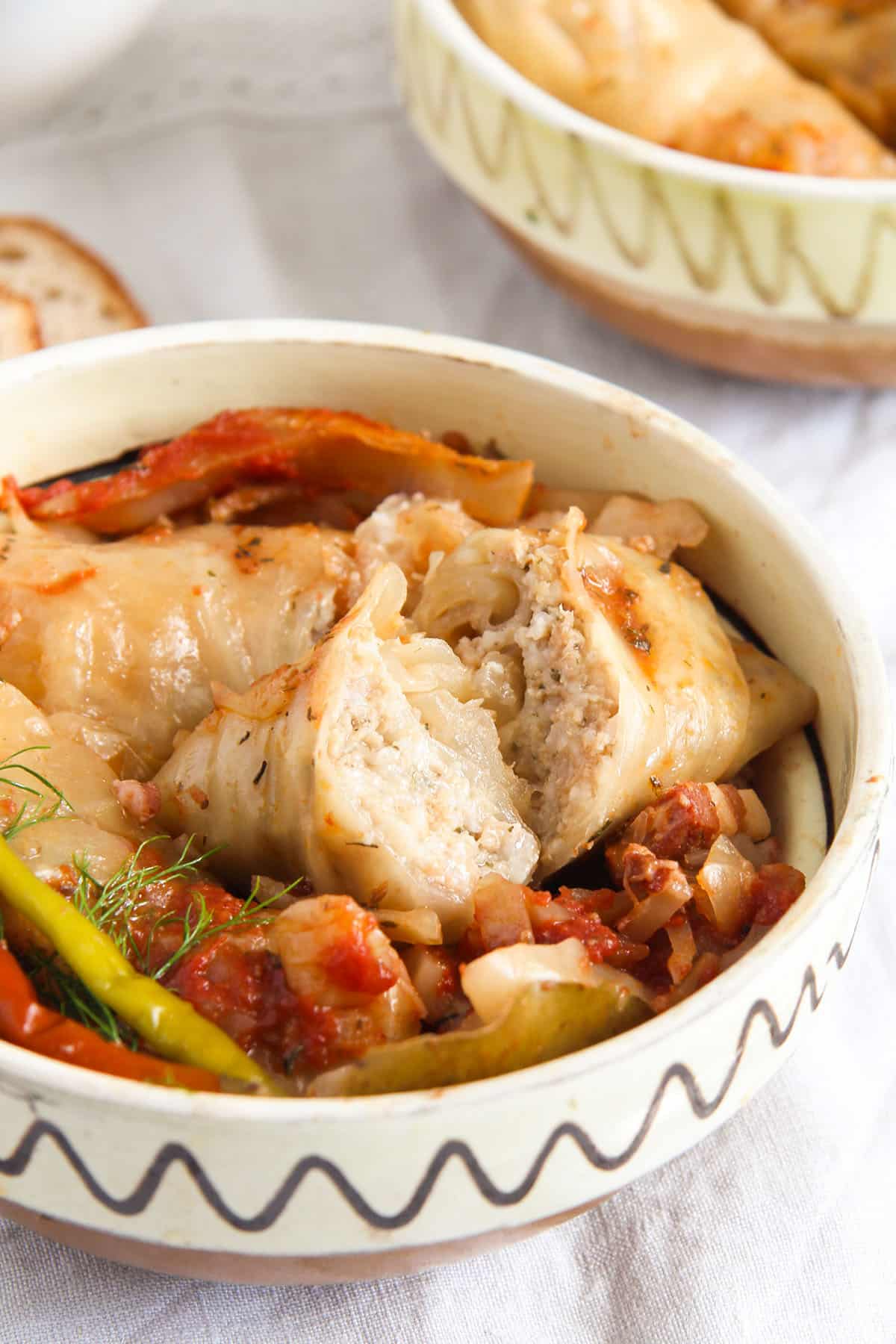
More traditional Romanian recipes
Recipe
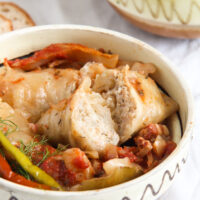
Sarmale Recipe – Romanian Cabbage Rolls
Ingredients
Cabbage:
- 1 large head of cabbage either sauerkraut or fresh white cabbage, Note 1
- 1 tablespoon fine sea salt
- ½ cup white wine vinegar when using fresh cabbage
Sarmale filling:
- 2.2 lbs ground fatty pork belly
- 2 medium onions
- ½ cup white rice
- ½-¾ cup cold water
- 12 oz smoked spare ribs
- 7 oz bacon preferably smoked
- lots of dry savory cimbru, Note 2
- lots of bay leaves
- peppercorns
- dill seeds
- fine sea salt
- 9 oz pureed tomatoes Note 3
To serve:
- polenta or white bread
- smetana or crème fraiche
- pickled hot peppers
Instructions
Prepare the leaves:
- Soak sauerkraut: If you use sauerkraut, separate the leaves and soak them in cold water for 2-3 hours.
- Boil water: If you use fresh cabbage, start by bringing a very large pot of water to a boil, a pot large enough to hold the cabbage head and still leave you some space to handle the cabbage.1 large head of cabbage
- Remove the core of your cabbage. First, cut away the protruding part of the core. Then make incisions with a small sharp knife around the core, about 4-6 incisions around it. Try to loosen it by cutting through it from one incision to another, like making lots of X signs. When the core is loose enough, start removing it piece by piece, cutting it here and there to make it looser.
- Blanch fresh cabbage leaves: When the water boils, add salt and the white wine vinegar. Carefully place the cabbage in the water, first with the hole facing down. Cook it for about 10-15 minutes, then turn it over and start removing the leaves. You will do that with the help of two forks, scratching, and pulling at the edges of the hole. If they don't come off easily, continue cooking the cabbage until they start to come off. Be careful not to scald your hands with boiling water.1 tablespoon fine sea salt + ½ cup white wine vinegar
- You will only be able to remove one or two layers of leaves at a time, so patience is required. Keep turning the cabbage in the pot from time to time. After removing some leaves, leave them to drain and cool down in a large colander and continue cooking the rest of the cabbage until you are able to remove all the leaves. The leaves should be really pliable.
Make the filling:
- Soak rice: In the meantime, wash and drain the rice. Soak it in enough cold water to just cover it until ready to use.½ cup white rice
- Grate the onions or chop them very, very finely.2 medium onions
- Combine: In a large bowl, mix the ground meat, the rice and its water, and the onions. Add salt, generously if using fresh cabbage, and carefully if using sauerkraut, which is already quite salty.Add lots of savory, at least 2-3 tablespoons, rubbing the savory between your fingers before adding it to the mixture.2.2 lbs ground fatty pork belly + rice and its water + onions + salt + savory
- Add some water to the filling to make it soft. This is not a filling like you would have for stuffed peppers; for instance, it must be really soft. Add water little by little until you get the soft consistency. I add about ½ to ¾ cup cold water. Mix well with your hands; the mixture should be soft and slurpy.½-¾ cup cold water
- When the mixture tastes well and the cabbage has cooled down a bit, you can start making the rolls.
Make the rolls:
- Prepare the leaves. You can halve the large leaves in the middle, dividing them at the stem, which you can discard.
- Leave the medium and smaller leaves whole, but cut away the lower part where the stem is very thick and try to cut the stem thinner with a sharp knife, which you will lead over the thicker upper side of the stem.
- If some of the leaves break, don't throw them away, you will either be able to build some rolls with the help of two broken leaves or chop them finely and use them as a base and topping for the sarmale pot.
Roll the cabbage rolls:
- Fill: Place some filling at the base of the cabbage leaf, fold the lower side over the filling, then the right side of the leaf over the meat, and roll. Stuff the left side of the leaf with your finger inside the roll.
Assembling the pot:
- Pork belly or bacon: If you have the rind of the pork belly, you can cut it into large pieces and arrange them at the bottom of the pot. However, if you don't have it, it is fine. Either put a few of the bacon strips at the bottom or start with the chopped cabbage.12 oz smoked spare ribs + 7 oz bacon
- Cut all the leftover cabbage into fine slices, the small inner leaves, and any other rests.
- Arrange rolls in the pot: Place half of it in a large pot (a Dutch oven would be great, but I have used other regular large pots as well). The pot should be large enough to hold two layers of cabbage rolls and still have some space at the top so that the water in the pot will not overcook and make a mess on your stove top.
- Add spices: Place 2-3 bay leaves on the chopped cabbage layer, 5-6 peppercorns, a good sprinkle of dill seeds, and an even better one of cimbru/ savory.
- Separate the smoked ribs and place about a third of them on top of the chopped cabbage.
- Chop the bacon and place about a third of it on the cabbage. Arrange one layer of sarmale on top and top them with bay leaves, peppercorns, dill seeds, savory bacon cubes, and ribs again.
- Salt: If using fresh cabbage, sprinkle the rolls with some salt as well. If using sauerkraut, you will probably not need any more salt.
- Arrange the second layer of cabbage rolls and top with bay leaves, peppercorns, dill seeds, savory, bacon, and ribs. My pot only takes two layers of cabbage but if your pot fits more, continue in the same manner. You should not have less than two layers, though.The pot should not be packed to the brim; the sarmale will expand a bit while cooking, and the water will cook over if the pot is too full.
- Top: When all the rolls are in the pot, top everything with the remaining chopped cabbage.
Cook the rolls:
- Bring a kettle of water to a boil and carefully pour over the sarmale. There should be enough water to hold the rolls but not cover them completely.
- Simmer: Cover the pot and bring everything to a boil, then lower the heat to a minimum. Simmer, covered, leaving a thin crack open for about 2 ½ hours or until soft.
- After this time, preheat the oven to 350°F/ 180°C.
- Mix the pureed tomatoes with some boiling water, enough to make the puree runnier. Pour the mixture on top of the sarmale and let it sip through them a bit.Alternatively, you can thinly slice a few ripe tomatoes and place the slices on top. In this case, add a bit more boiling water as well, but not too much.9 oz pureed tomatoes
- Bake: Continue cooking the sarmale for about one hour more in the oven, uncovered this time.
- Tip: If you think that most of the liquid is gone, you can add a bit more boiling water but don't overdo it, most of the water should be gone by the end of the cooking time anyway, and the top of my pot is always a shade darker and slightly caramelized, I like that.
- Serve with polenta or white bread and smetana. And some hot pickled peppers, if you like them.
Notes
- Cabbage: If you're using sauerkraut, try to find whole fermented cabbage heads at a Russian, Polish, or Turkish store. If the leaves are very salty or sour, soak them in water for 2 to 4 hours. They’re already soft and flexible, so rolling them is easier than with fresh cabbage.
- Savory -cimbru -is a must when making sarmale, but if you can’t find it, you can replace it with thyme or Greek oregano, if you can find that – it’s quite similar. I never measure the salt or savory, I just add plenty- less salt if I’m using sauerkraut - and taste until it feels right.
- Tomatoes: Not tomato paste or tomato sauce, just plain pureed tomatoes from a can.


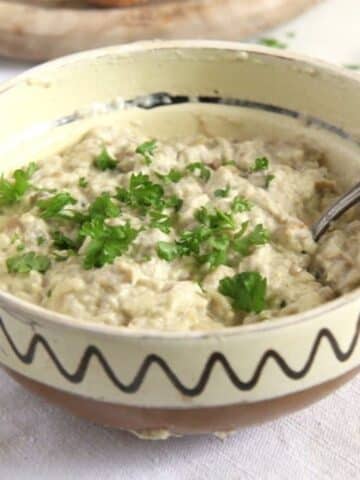
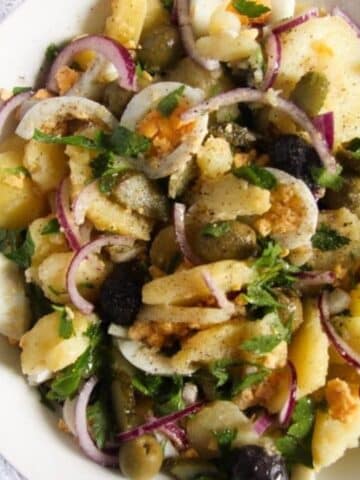



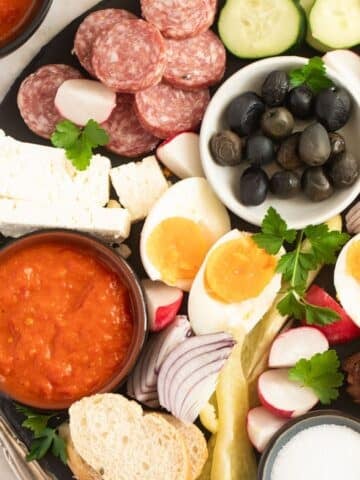
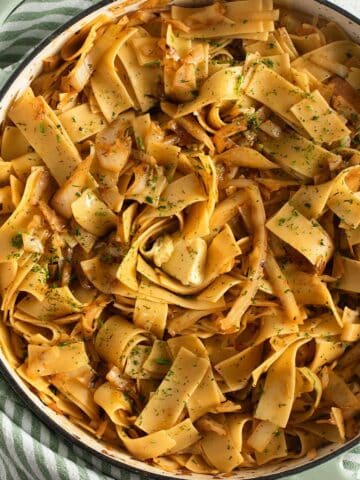


Carol says
This method of softening cabbage for cabbage rolls is getting more popular and I know of many people who will not go back to boiling their heads of cabbage. You do just freeze the whole head of cabbage and it softens enoiugh to make rolling very easy. Nothing else to it. i love that everyone remembers their childhood cabbage rolls as the best! I have memories of even sneaking cold cabbage rolls from fridge and they were sooooooooo good. My Mom and grandmother would make such cute tiny cabbage rolls(Hollubsti- Ukrainian)and there would be days of these beautiful foods. I can remember getting impatient for just going back to regular food after holidays but I would just love another chance to have a holiday with these delicious foods again.
Amy says
I remember, my grandmother would freeze and then defrost a whole head of cabbage to soften it prior to stuffing. Have you ever heard of this method? I can't remember if she would also blanch it after freezing or not.
Adina says
I never heard about it, but I must try it myself. Blanching the cabbage is the most annoying part of making sarmale; it would be great if I could simplify that. Thank you.
Vi says
where does the tomato sauce go? I usually add it ti the boiling water...
Adina says
Hi Vi. It says in the recipe. You mix it with a bit of water and add it to the pot before you place the pot in the oven.
Lidija Ristova-Lehmann says
Hallo Adina,
dieses ist auch in Makedonien ein traditionelles Rezept und ich würde sagen, meine Mutter kocht die besten sarmi, wie wir sie nennen. Ich habe mich gefreut diese in deinem Blog zu finden.
Beste Grüße 🙂
Lidija
Adina says
Hi Lidija. They are great, I would love to try your mother's too, I am sure they would be quite different than my grandma's recipe, but delicious. I haven't met a sarma I didn't love yet! 🙂
Penelope says
https://www.wildfermentation.com/romanian-fermented-whole-cabbage-process/#0
Maybe you can try a small batch one day?
Thank you for your beautiful blog and recipes.
I came for Goulash and Langos, but now saving your blog for so much more!
Adina says
I'm happy to hear it, Penelope. I've never managed to make a smaller batch of sarmale, they are so much work, I always think that when I make them it should be well worth it! And we never get tired of eating them, even 4 days in a row. 🙂
Juanita says
can you use any head of cabbage for Sarmale? I am wanting to try Sarmale but I live in the USA and want to try my hand at this dish.
Adina says
Hi Juanita. Best is white cabbage. You can make cabbage rolls with any kind of cabbage, but traditional Romanian sarmale are made with fresh white cabbage or with sauerkraut (pickled whole white cabbage).
Christine Curtin says
Hi Adina,
Love your recipes. Trying to go back to my Romanian heritage
Adina says
Thank you, Christine. I hope you get to try a few recipes, Romanian cooking is yummy. ?
Thao @ In Good Flavor says
I have a soft spot for cabbage rolls. I grew up eating Vietnamese cabbage rolls which we serve with white rice. When I think of comfort food, it's definitely one of mine. This Sarmale looks amazing!! Put a large bowlful of it in front of me with a side of white rice (sorry, old habits die hard) and I'm a happy girl!
Marvellina|What To Cook Today says
I know what you mean about grandma's recipe! It's just never the same when I made it! I remember my grandma slaughtering her own chicken in the backyard so she could prepare it for dinner that day! Talking about fresh from the farm! 🙂 Your sarmale still looks amazing though!